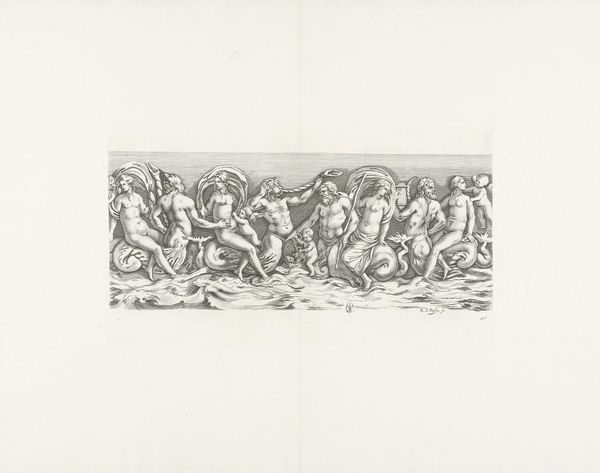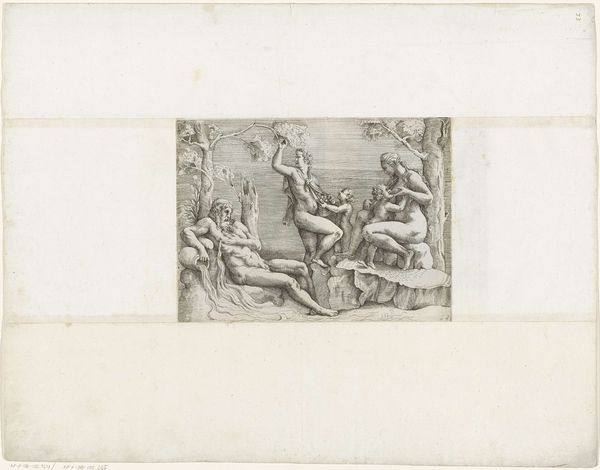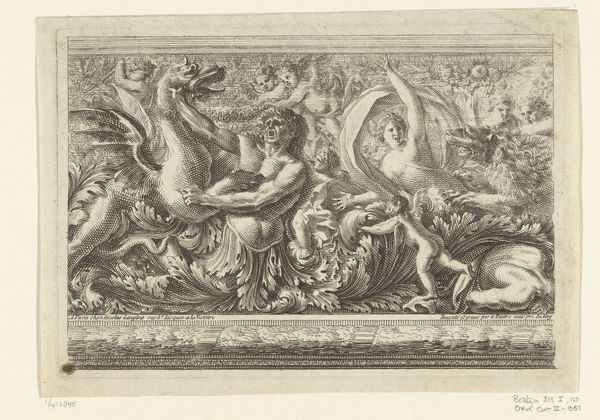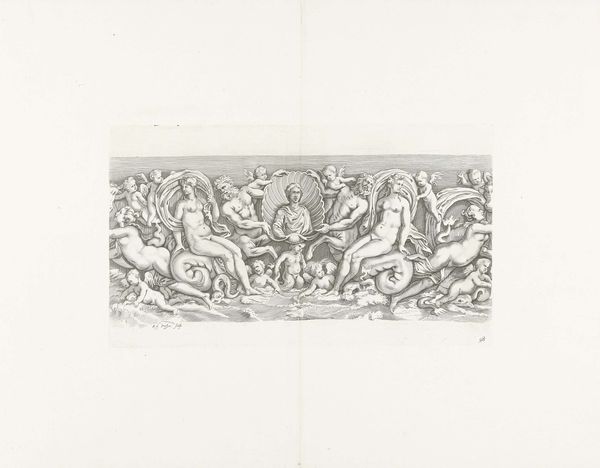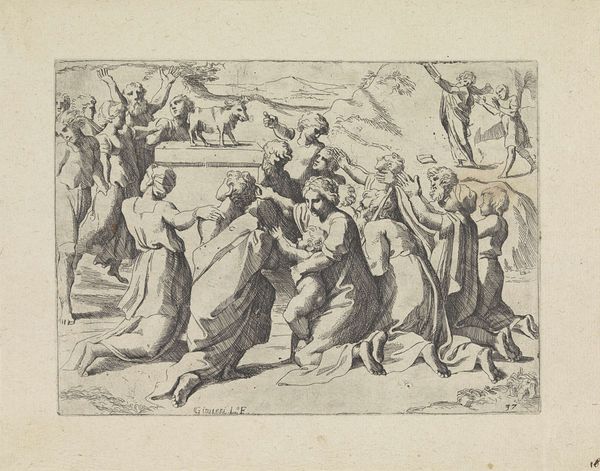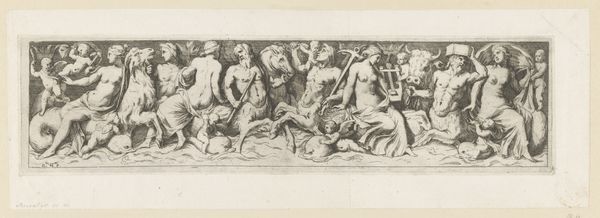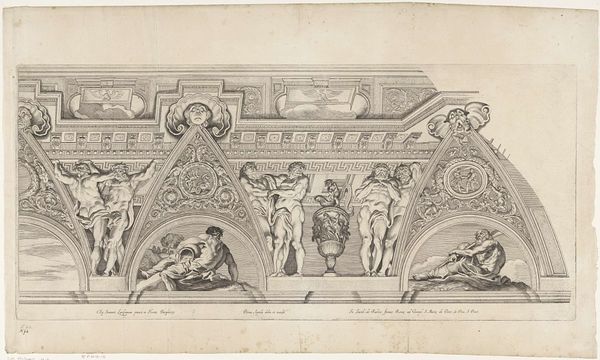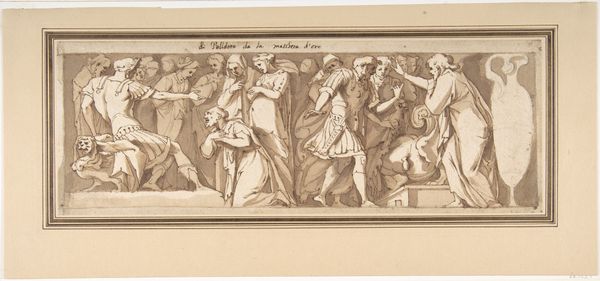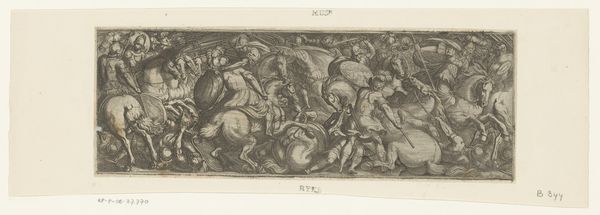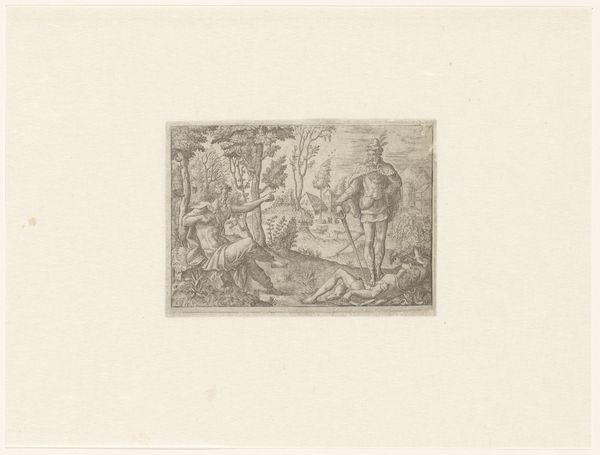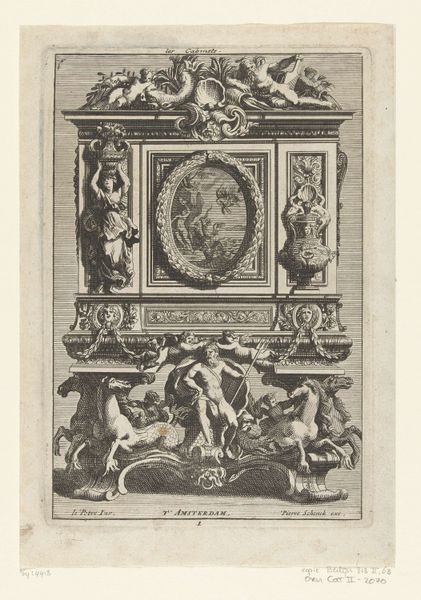
print, relief, marble, engraving
#
ink drawing
#
narrative-art
#
baroque
# print
#
relief
#
figuration
#
history-painting
#
marble
#
engraving
Dimensions: height 234 mm, width 480 mm
Copyright: Rijks Museum: Open Domain
Editor: This is Reinier van Persijn's 1640 engraving, "Bas-relief of a sarcophagus with the death of Orpheus," housed in the Rijksmuseum. It depicts quite a dramatic scene; it's somber, full of mourning, and definitely Baroque in its theatricality. What stands out to you, looking at this? Curator: The persistent motif of lamentation is fascinating. Observe the postures—the bowed heads, the slumped shoulders, the general collapse of the figures surrounding Orpheus. What psychological weight do these repeated gestures of grief carry, and how do they connect us to this ancient story? Editor: It's like they're all acting out the same emotion in slightly different ways, but to the same tragic end. Do you think that the artist made a point about mortality? Curator: Mortality, certainly, but perhaps more acutely, the vulnerability of beauty and art itself. Consider the lyre, symbolic of Orpheus's music, juxtaposed with instruments of violence wielded against him. This isn't simply about death; it’s about the silencing of creativity. Note the continuous curves which define the figures. What mood is generated here? Editor: Melancholy. Like waves washing over everything. I guess that also speaks to Baroque drama, as opposed to Renaissance balance. Curator: Exactly. Consider how this scene would have resonated with audiences in the 17th century, during a time of both artistic flourishing and immense social upheaval. Is Orpheus, perhaps, a symbol for the artist in society, ever at risk of being silenced or destroyed? Editor: So, in essence, Orpheus embodies not just personal tragedy but also a broader cultural anxiety about the role and fate of art itself? That's incredibly thought-provoking; it adds so much more depth to the engraving. Thanks!
Comments
No comments
Be the first to comment and join the conversation on the ultimate creative platform.
